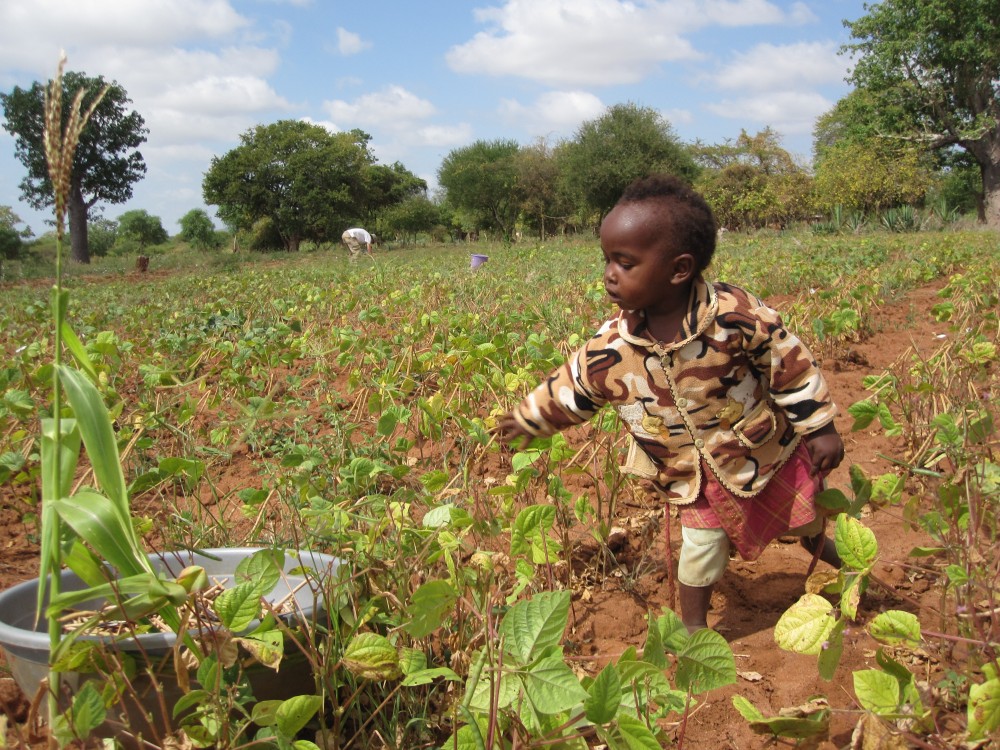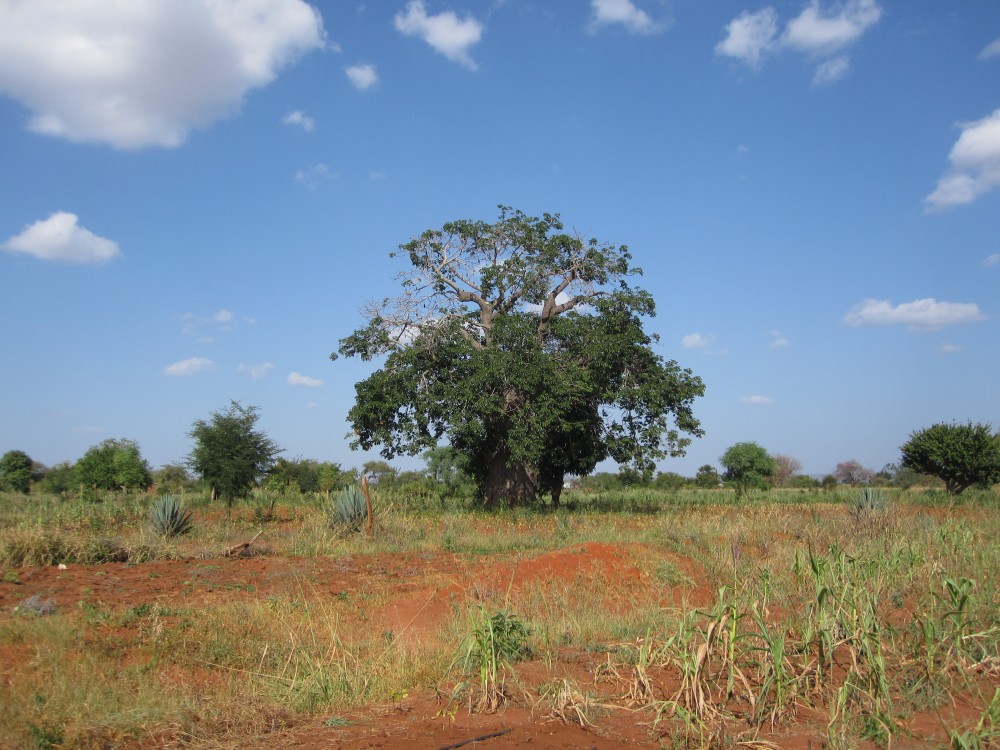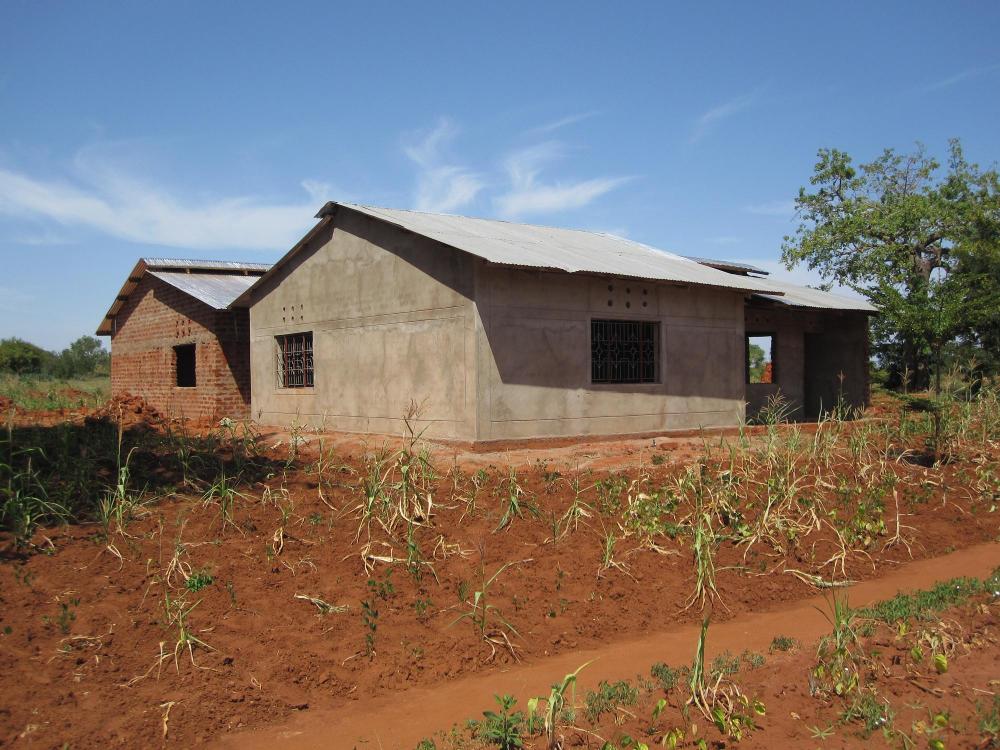Greetings everyone.
We’re back again after another extremely hot week. We’re also back in the best cybercafe in Kibwezi (i.e. it’s better than the other one) and glad to be blogging again (even though it still takes 5 hours to write).
We’ve been buoyed this week by the news that we might be getting some visitors in a couple of months. Nothing is definite yet, but we’re excited that some of our friends/family might be coming to see us once we get to Uganda. But while we wait for confirmation, and since you can’t all come and visit us, here’s a sample of our life here in 2011:
Dealing with the Weather (or as Africans call it, the Climatic Conditions): at the moment here in Southeastern Kenya the weather is really, really hot. And very, very dry. Which is unsurprising really since we’re in the middle the hot, sunny season, and as we mentioned on Monday there hasn’t been any rain at all since we’ve been here. And although the countryside still looks quite green from when there was rain (the plants and trees are unbelievably hardy and resourceful) it’s now mainly beginning to look like the arid area we were told to expect. Apparently, it’s not likely to rain until the long-rain season starts in April either, so the locals have been told to expect some serious drought. There are already areas in East and Northeast Kenya which are already experiencing food and water shortage, and districts such as Kibwezi look likely to be next. Fortunately for us -and the onions we’re about to plant- there is a reasonably reliable water supply at the project. What is less clear is how the project is going to be able to pay for it.
Which brings us neatly on to:
Whether or Not to Trust African Charities: the reason there’s some doubt about how the project is going to pay for its water is down to the umbrella organisation Watoto wa Dunia. Although they have helped the project for a number of years in a number of ways, for example donating the 5 acres of land back in 2005, we think they’ve been patchy at best in their support. When we arrived in November the project seemed to be in a state of stagnation and appeared, in truth, to be all but unsupported. Building work on the orphanage has been habitually stop-start and halted for good in 2008; many of the fields have been intermittently left fallow and some are not much more than bush; and the morale of the women is more often quite low than quite high. The project has taken so long to get going that the orphans we’re trying to help are still nowhere to be seen. However, when we arrived with a fistful of shillings generously donated by you -our friends and family- things really started moving: construction work began with renewed gusto, the women started to come to the project to work in the fields, and we even had an impromptu visit from the founder of Watoto. It looked like the situation had really changed, and that the project would go on to properly rejuvenate itself.
But this is Africa where everything is much more complicated than it needs to be, and where everything takes much longer than it needs to. Now don’t get us wrong, we fully understand that as volunteers we should not and do not expect to see any big changes during our brief stays at each project: it’s enough for us to know that we’ve tried, that we’ve shown that we care, and that we might have perhaps made some small difference somewhere, at least as part of a much greater whole. Which is why it’s hard not to get excited when you’re working on physical things like buildings and fields, because things do change, often very quickly. But things at the project have now pretty well stopped changing and we’re not entirely sure why; our questions to Watoto wa Dunia remain unanswered.
For instance, the things that we saw them promise the women during our very emotional visit to some of the most vulnerable members of the community, those things which we felt were so vital, have, without exception, failed to materialise; cows haven’t been bought, school fees haven’t been paid, and houses haven’t been repaired. We feel that the women have been let down by Watoto wa Dunia. And we feel that those life-changing promises shouldn’t have been made if their fulfillment could not be guaranteed. Meanwhile, at the project the builders at the orphanage have had to down tools because materials have run out and wages have not been paid. And the hard work which has gone into preparing the fields for sowing might yet go to waste if the water supply is cut off. So we continue to do what we can, but we always have to remember that we’re up against organisations and institutions that might not always bee what they seem, or might not always be as enthusiastic or as honest as we are. We don’t know exactly what the situation is with Watoto, or how it will unfold, but we know there are people who need desperate help who are not getting it. It’s frustrating but, like all Africans, we’ll just have to continue to wait and see.
Which brings us less neatly onto:
Trying to Describe Kenyan People: they are basically a funny lot. Some of them are the nicest people you’ll ever meet (like the almost literally larger-than-life Pastor we met this week), some of them are the dodgiest people you’ll ever meet, and some of them you just can’t tell which they are. And it varies from place to place, because Kenya is a geo-sociological oddity: it is a singular nation but it is one which is riddled with tribal division, and this very significantly affects the way people seem, and how the country is run. There are many dozens of tribes, but there are a handful of powerful ones, each of whom represents -in the narrowest terms- its region of Kenya. So if the President is Kikuyu, which he is, then most of the important ministers, army chiefs and judges will be Kikuyu, which they are. And the majority of the money available for infrastructural investment will be spent in Kikuyu areas, which it is. It was this situation which led to the very terrible and very bonkers inter-tribal violence three years ago, when the non-Kikuyu tribes basically demonstrated that they’d had enough of tribalism and cronyism, and how it had become completely institutional here. But even now, no-one is really ‘Kenyan’; instead, each family or individual is identified by their tribe or traditional tribal area. They speak their own very distinctive languages, follow their own cultural customs, and generally don’t like each other very much. It makes it an interesting country to travel around in, but no doubt a very hard country to govern.
In their day-to-day lives, though, most Kenyans do pretty much the same things: try and make money by selling small amounts of cheap stuff; eat and drink very little; travel around on ridiculously overcrowded buses; and kick dogs a lot. Their English is good, but funny (they like to add the letter ‘y’ to the ends of words, so your journey will have been goody or you’ll have been wearing socksy. They also pronounce –ur– as –a– so a visit to church becomes a visit to chatch), all of which makes them sound like someone doing an impersonation of a stereotypical Nigerian conman.
They love their mobile phones so much (it’s odd seeing a goatherd dressed in rags and wandering across the savannah with his animals, while texting) and it is mainly through this medium that they seem to communicate/argue with each other. They love loud shirts: Western dress is universal for men, although women (in the countryside, at least) still wear khangas. All men love the English Premier League, or rather the top four teams of the English Premier League, to the ridiculous extent that a fortnight ago a bloke was beaten to death outside a pub during an Arsenal v Chelsea game. Now it’s one thing having a football-related punch-up outside the ground, or in a nearby boozer, but to kill someone because he prefers watching a team on the telly more than watching your team on the telly? Now that’s just pathetic. And it is a fact that Kenyans are bigger drinkers than even the Brits or the Irish (no, really!). And since quite often the stuff they’re drinking is lethal locally-brewed stuff, travelling on the roads at night is not to be recommended.
Mind you, travelling on the roads during the day isn’t much better: Kenyans move around the country in two main ways: by Nissan (a small, wobbly, officially 14-seater but quite often 24-seater minibus, confusingly not always a Nissan) or by matatu (a large and always unbelievably overloaded and overcrowded bus, which plays the world’s loudest -and therefore most distorted- bongo flava ‘tunes’, and whose bodywork is invariably daubed with meaningless or bizarre graffitied English buzzwords such Internet or Mourinho). On the upside, both are ludicrously cheap. On the downside, 3000 people die in them each year. We’ve been on both and would recommend their use only in necessity, and definitely not if you’ve just eaten.
Which brings us to grub, and:
How to Describe Kamba Food: Pretty bland, but when cooked correctly, very satisfying. Since we’ve been at our homestay house, we’ve been sampling some more traditional African cuisine, which we thought we’d share with you (not literally). Now it’s not easy taking clandestine photos of your dinner, especially at night, but we’ve done our best. Our daily menu could be described as follows:
Breakfast is still usually mandazi or chapati. Both are extremely filling, not to mention extremely full of (100% vegetable fat) cooking oil. It’s hard to motivate yourself for work after eating half a dozen of either, but you find that once you’ve finally got going you can easily work till lunchtime, even in mega heat. Breakfast is served with extreeemely sweet tea, or Dorman’s coffee, which we recommend most highly. Illustration: mandazi, a kind of Doughnut-cum-Yorkshire pudding triangle.
Lunch will usually be ugali with boiled greens, boiled lentils or boiled cabbage. It sounds grim, but it’s a testament to Mary’s cooking that it actually turns out to be really tasty. The advantage of ugali is that it literally sticks to your insides (sometimes literally sticks to the inside of your mouth, or the inside of your eating hand: it’s like polygrip) and contains such a humongous amount of carbs you will not be hungry for hours and hours. Everything else served with it is nice because it comes swimming in oil, and is cholestorol-tastic. Illustration: Ugali with cow-peas and cow-pea leaves.
Dinner: dinner is served between 7pm and 9pm, outside, where it’s cool but also where it’s dark. So while it’s nice not to have flies and sweaty clothes to deal with, it’s also not always possible to see what you’re eating. But so far it’s all tasted very nice. Recently we’ve been having lots of mothekoi which is the local ‘speciality’ and consists of boiled maize and beans. It’s a pretty potent mixture for two people sharing a small bed enclosed by a thick mosquito net, but it’s much nicer than it sounds or looks. It’s known nationally as the staple Kamba food, and tastes something like a tin of kidney beans mixed in with some popcorn that hasn’t popped. Except probably nicer. We also occasionally have some bananas (which are ginormous) or some mangoes (which are impossible to eat without covering your face in juice) if there’s enough money. Illustration: mothekoi (yes, we know it looks like dog food, but it’s actually okay)
So you don’t need to worry that we’re not eating right. And, in fact, we do need to eat right because of what we do during the day, which brings us extremely neatly onto:
Working as Volunteers: This week we’ve been doing lots more digging even though the weather has been even hotter. And the tiredness problem is compacted by a little equation which we worked out: the more you work, the blunter your hoe gets. And the blunter your hoe gets, the more you get tired out. The more tired you are, and the blunter your hoe is, the harder the work gets. Therefore by the end of the day we’re usually pretty exhausted. But we’re proud to say we’ve finished preparing (that is, turning over the topsoil, flattening it, ploughing lanes in it and laying drip-feed pipes) three quite large fields, and they are now ready for the baby onions to be transferred from their nursery. We should say that, pretty much most of the time it’s just been us working out there, and it’s frustrating that there isn’t more enthusiasm or support from the widows. Yet at the same time we understand that they are pretty despondent, having been promised so much and having to still deal with their chronic tiredness and poverty which comes with living so far below the breadline.
Volunteers and locals alike also have to contend with:
Insects which might one day take over the Earth: Now, insects in Africa -as we have mentioned before- are not like your common-or-garden insects in Britain. As we’ve explained, they are much bigger, much nastier, and much grimmer. Our toilet block at Mary’s house, for example, is a haven for the world’s largest cockroaches, which Linda isn’t especially happy about. And although we no longer have to contend with the Centipedes of Death or the Maggots of Massiveness in the hut, we still have unrealistically large wasps, crickets and spiders to deal with, as well as the occasional scorpion (which actually aren’t big at all). Worst of all, though, is the really annoying tapping thing which keeps awake at night. We don’t even know what it is. But while the variety (and size) of du-dus is quite impressive, all-in-all we could probably do without them.
Thinking about life here: So there’s a snippet of our life in Africa. Probably the biggest difference to life in the UK is time. It is true that time in Africa is based around daylight, so it’s limited what you can do, but it’s also based around heat. That means that things get done when they get done: there’s no hurry because actually it’s impossible to hurry. It’s too hot. But what that means is that, at least here in the country, there’s no stress, no deadlines, no hustle and bustle and fighting to get things done. Life is only dictated by the length of time between seasons, so consequently there’s pretty much always time to get things done. Getting your shoes mended is done there and then, because you can afford the ten-minute wait; taxis are shared so they leave town when they’re full, and no-one minds the wait because there’s no rush to get things done; and people stop and talk to each other -even spontaneously invite people over for tea (which takes ages to make)- because no-one is desperate to get home for EastEnders or is hurrying to catch the tube home.
Yes, it’s a hard life here what with the drought, and the heat, and the constant lack of money; but in some ways it has a much richer quality: generations share time and space together; neighbours share stories as they work together; people are part of a much greater entity, which gives them a sense of belonging and a sense of perspective. Perhaps their experiences of inequality and hardship have given them a greater understanding of what it means to ‘have’, and what it means to live positively, always in hope. It’s hard to say, and of course it’s far from perfect, but we’re yet to see anyone stop and say “God, I hate my job. What the hell am I doing here?”
Best wishes,
Andy and Linda












How not to encourage people to visit you:
1. Publish road death statistics for Kenya.
2. Publish picture of giant maggot.
Other than that, we’re good.